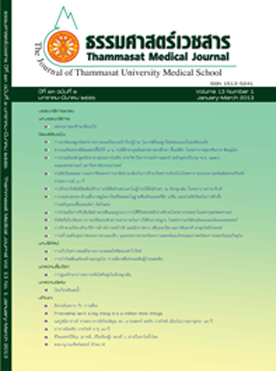Management of hypertension in emergency room
Keywords:
Management, Hypertension, Emergency roomAbstract
Hypertension in emergency room is an extremely common illness in clinical practice. This condition can beclassified as hypertensive emergencies, hypertensive urgencies and severe asymptomatic hypertension. Therefore, triage ofhypertensive patient is the cornerstone of the hypertensive patient management.Hypertensive emergencies are unusual in clinical practice but it’s a severe life-threatening condition. Thesepatients should be rapidly treated with intravenous antihypertensive agent. The major target organ damage in hypertensiveemergencies are heart, brain and kidney. Chest pain is the most common symptom followed by dyspnea and neurologicdeficits. The choice of antihypertensive agents, level and duration of target blood pressure in each condition of hypertensiveemergencies are different.Hypertensive urgencies are more common but less severe than hypertensive emergencies. Rapid-onset oral medicationand short observation are the optimal management in the emergency room. Target blood pressure should be achievedwithin 24 hours and follow up within 24-72 hours is recommended. However, medication that aggressive lowering bloodpressure is the cause in decrease blood supply to the brain and leads to ischemic events.Management of high blood pressure in severe asymptomatic patient caused by anxiety or pain should be treatedaccording to the cause and antihypertensive agent is usually unnecessary. Blood pressure follow up should be done within72 hours at out-patient department.
Key words: Management, Hypertension, Emergency room



